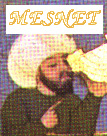

• Dan Varisco, President-Elect, MES
The second step is an international commitment made up front to provide a massive influx of development assistance to reconstruct the economic and social infrastructure of Afghan society. After 23 years of foreign occupation and civil war, the country's roads, irrigation systems, and electrical grid are in a state of ruin, and Afghanistan now is in the grip of a drought that has turned much of the region into a desert. Afghans remember well that the international community largely forgot about them after the Soviets withdrew from their country, and they must be assured that this will not happen again and that we will work with them to rebuild the once vibrant and modernizing society that existed prior to the Marxist revolution of 1978. Without such commitments, Afghans will find little reason to take the risks that opposing Bin Laden and the Taliban will entail. On the other hand, the promise of sustained international support for Afghanistan will send a message not only to Afghans, but to Muslims generally that the West is committed to their welfare rather than their destruction.
No group has suffered more in the last quarter century than the Afghans, but they are a resilient people and will be a formidable foe again if they believe themselves to be under invasion from a foreign enemy. We must frame our response to the terrorist outrage not as an assault but as a liberation&emdash;from oppressive rulers, unwanted guests, and the economic calamity that is their everyday reality. Respected Afghan leaders must be at the forefront of our efforts, and it must be clear that our intentions are to help rebuild rather than to destroy. Those of us who have enjoyed the prosperity of the last two decades must recognize that terrorism is born of political and economic despair. If we fail to take into account Afghanistan's future, as well as its past and present, Afghanistan will remain a place where terrorists can find safe haven, and all the military might in the world won't make us safe again.
Sustaining these efforts was the movimento antimafia, a multi-faceted citizensí social movement. Catalyzed anew by each episode of terror, it poured its energy, in the form of a great deal of volunteer work, into promoting the values of democracy and civility. It is important to appreciate that antimafia Sicilians share both location and history with the mafia. Dedicated to the antimafia struggle, they are nevertheless loyal to their Sicilian identity, and in some cases burdened by a past of ambiguous social relations with mafiosi or their friends and kin. The resulting moral anguish is the more troubling because ìSiciliansî are so often treated as a stigmatized category by the wider world. In coping with their anguish, men and women in the forefront of the struggle have found comfort in the declarations of support that they have received from outsiders ñ for example, a sympathetic press in Northern Italy and Europe.
How far these lessons actually are from current American foreign policy is difficult to know; our attention is riveted on the deployment of hardware and troops while the word ìwarî has been chosen to summarize what lies ahead. The qualification that the ìwarî will be unlike any other we have ever known does not adequately dispel what this word conjures: battles between opposing sides, the fear of retaliation, an unrealistic expectation of victory. The alternative word ìstruggleî (which, by the way, does not preclude military action) should replace the word ìwarî in our national rhetoric about terrorism. Ultimately, struggles against secretive and violent organizations have their best chance if they go forward along multiple paths: investigations and prosecutions, citizensí mobilizations against corruption and violence, and a concerted effort to address the millions whose children have no future.
.
